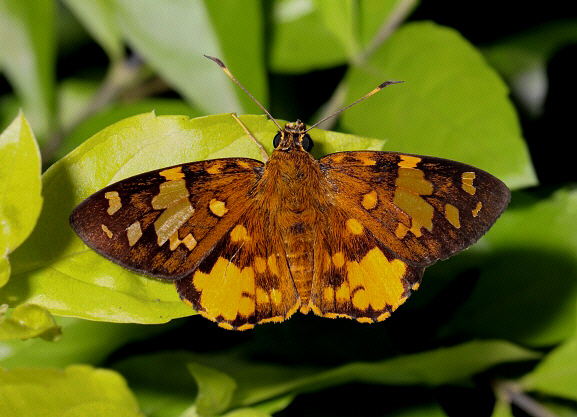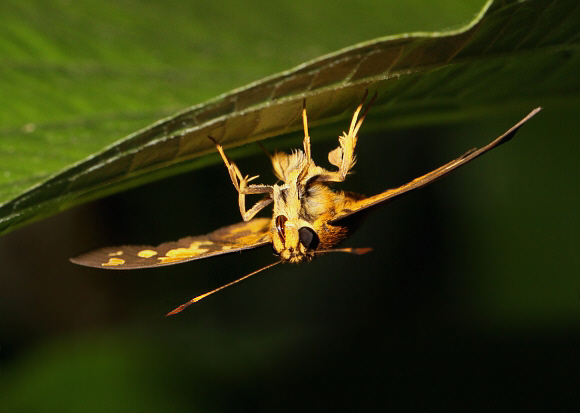
Introduction
There are about 130 species in the genus Celaenorrhinus. 24 of these are found in the Neotropical region, 50 are found in various parts of eastern Asia, and 45 are Afrotropical in distribution.
There are several yellow / orange species in Africa, of which galenus is by far the commonest and most widespread. It is distributed from Senegal to Cameroon, and probably further south, but confusion between this and related species makes it difficult to assess its true status.
Habitats
This species is found in rainforest, including degraded and secondary forest. It also penetrates savannah country in riparian forest, and can be found in arboreta and botanical gardens.

Lifecycle
The larvae feed on Justicia, Hypolestes ( Acanthaceae ) and Clerodendrum ( Verbenaceae ).
Adult behaviour
The vernacular name Orange Sprite is very appropriate, as the butterfly appears bright orange in flight, and is hyperactive, dashing mischievously and incessantly around bushes at incredible speed.
The male spends a lot of time sitting under leaves, with wings outspread, ready to pounce instantly on any small passing insect. When it spots another Celaenorrhinus, or any other orange or yellow skipper, it engages it in a ferocious high-speed aerial battle that can last for several minutes. After each sortie the butterfly nectars for a few moments, and then dashes back beneath another leaf, instantly flipping upside down, and facing outwards ready for the next visitor. A true master of high velocity aerobatics !
Males visit bird droppings, and sometimes feed at them for an hour or more at a time. Both sexes regularly nectar at flowers, especially favouring Ipomoea ( Convolvulaceae ). They share with Pteroteinon skippers the habit of crawling deep inside the trumpet-like flowers to reach the nectar. They remain there, sometimes 3 or 4 per flower, feeding avidly until the petals close around them at dusk, providing a safe haven for the night. The next day, at dawn, the flowers gradually reopen, and the butterflies crawl out and fly away.
